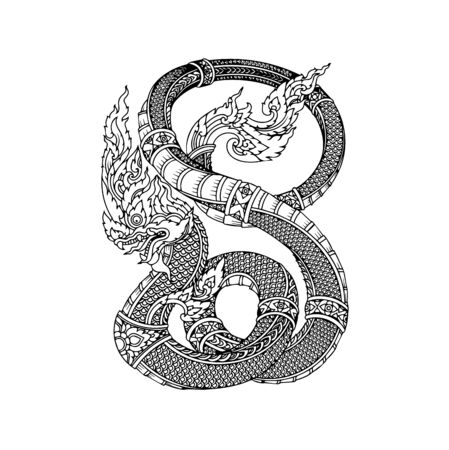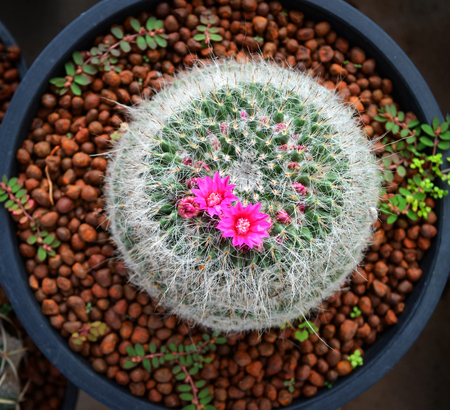1. Understanding the Principles of Feng Shui
The Origins of Feng Shui
Feng Shui is an ancient Chinese practice that dates back thousands of years. The term literally means “wind” (feng) and “water” (shui), elements that are essential for life and symbolize the flow of energy. Traditionally, Feng Shui was used to determine the best placement for homes, graves, and cities to ensure harmony with nature and good fortune.
The Science Behind Energy Flow
At the heart of Feng Shui is the concept of Qi (pronounced “chee”), which refers to the invisible life force or energy that flows through everything. According to Feng Shui, when Qi moves freely and smoothly, it creates a healthy, prosperous, and harmonious environment. If Qi is blocked or stagnant, it can lead to imbalance and negativity in our surroundings.
Key Concepts in Feng Shui
| Concept | Description | Western Equivalent |
|---|---|---|
| Qi (Energy Flow) | The vital force that circulates through all living things and spaces | Life force, vibes, or atmosphere |
| Yin & Yang | The balance between opposite forces (dark/light, soft/hard) | Harmony, balance, duality |
| Five Elements | Wood, Fire, Earth, Metal, Water – each brings unique energy and characteristics | Nature’s building blocks; similar to classical elements in Western philosophy |
| Bagua Map | A tool used to map out areas of a home or space to align with specific energies and intentions | Room zoning or mood mapping in interior design |
Feng Shui in Modern American Lifestyles
Today, many Americans use Feng Shui principles without even realizing it—like arranging furniture for better flow or bringing plants into their homes for a sense of vitality. The focus on energy flow and balance resonates with modern wellness trends and sustainable living. Adapting these ancient concepts to Western culture can make our homes feel more comfortable, inviting, and connected to nature.
2. The Symbolic Power of Plants in Eastern Philosophy
Feng Shui, at its heart, is about creating harmony between people and their environments. In traditional Eastern philosophy, plants are not just decorative items; they carry deep symbolic meanings that are believed to influence prosperity, happiness, and overall wellbeing. Let’s explore the traditional symbolism behind some popular Feng Shui plants and how these ideas can be embraced in modern American homes.
The Role of Plants in Feng Shui
Plants are seen as living energy (Qi) boosters in Feng Shui. Their growth and vitality represent life force, renewal, and positive change. Certain plants have gained special recognition for attracting good fortune and enhancing specific areas of life such as wealth, health, or relationships.
Popular Feng Shui Plants and Their Meanings
| Plant Name | Symbolism in Eastern Philosophy | Common Placement in the Home |
|---|---|---|
| Lucky Bamboo | Resilience, flexibility, good luck, and growth. The number of stalks represents different blessings (e.g., three for happiness, five for health). | Entryways, office desks, or living rooms to invite positive energy and opportunities. |
| Jade Plant (Crassula ovata) | Wealth, prosperity, and friendship. Its round leaves resemble coins. | Near entrances or in the southeast corner (wealth area) to attract abundance. |
| Money Tree (Pachira aquatica) | Financial luck and stability. Braided trunks symbolize interconnectedness and strength. | Main living spaces or offices to encourage financial growth and well-being. |
The Science Meets Symbolism Approach
While the symbolic meanings come from centuries-old beliefs, modern research shows that indoor plants also purify air, reduce stress, and improve mood—benefits appreciated worldwide. Integrating these symbolic plants into your home can bridge cultural traditions with the science-backed advantages of indoor greenery.
Tips for Incorporating Feng Shui Plants in Western Lifestyles
- Select healthy plants that fit your personal style and space constraints.
- Place plants where you spend the most time to maximize both symbolic and wellness benefits.
- Be mindful of plant care—healthy plants amplify positive energy more than neglected ones.
By understanding both the symbolism and practical benefits of Feng Shui plants, you can create a living environment that supports prosperity and wellbeing while fitting seamlessly into a modern American lifestyle.

3. Scientific Perspectives: How Plants Enhance Indoor Spaces
Feng Shui has long celebrated the power of plants to bring balance, harmony, and vitality to our homes. Today, modern science is catching up, offering research-backed evidence that supports what Eastern traditions have known for centuries. Let’s explore how indoor plants not only add beauty but also contribute to healthier and more enjoyable living spaces—perfectly aligning with both ancient wisdom and Western lifestyles.
Air Quality: Nature’s Air Purifiers
Many studies, including those from NASA, show that indoor plants can help filter out common household toxins such as formaldehyde, benzene, and trichloroethylene. This means cleaner air to breathe and a fresher-feeling home—something everyone can appreciate.
| Plant Type | Main Benefit | Common Toxins Removed |
|---|---|---|
| Snake Plant | Low maintenance, effective at night | Formaldehyde, Benzene |
| Pothos | Great for beginners, fast-growing | Formaldehyde, Xylene |
| Peace Lily | Beautiful blooms, strong air filter | Benzene, Trichloroethylene |
| Bamboo Palm | Adds humidity, non-toxic to pets | Formaldehyde, Benzene |
Stress Reduction: Creating Calm in Everyday Life
The presence of greenery indoors has been shown to lower stress levels and boost mood. Research from universities like Texas A&M found that simply being around plants can decrease feelings of anxiety and foster a sense of well-being. Whether it’s a lush Monstera or a cluster of succulents on your desk, these living companions create peaceful oases amid busy routines.
Mental Health Benefits at a Glance:
- Lower blood pressure and heart rate
- Reduced feelings of fatigue and tension
- Enhanced overall sense of happiness
Boosting Productivity: Plants in Workspaces and Learning Environments
If you’re working or studying from home—a trend thats become part of American life—adding plants to your environment can make a real difference. Studies published in journals such as Journal of Environmental Psychology show that indoor plants improve concentration, memory retention, and creativity. Offices with greenery report higher employee satisfaction and fewer sick days.
Quick Tips for Adding Plants to Your Space:
- Desk-friendly options: Try small pothos or peace lilies for easy care.
- Brighten corners: Use tall snake plants or bamboo palms where sunlight is limited.
- Create focal points: Place a statement plant near your entryway for positive first impressions.
This fusion of ancient Feng Shui symbolism with modern scientific findings offers a holistic approach to wellness that fits beautifully into contemporary American homes and offices. By choosing the right plants for your lifestyle, you can enjoy cleaner air, greater peace of mind, and increased productivity—all while honoring timeless traditions in a fresh way.
4. Integrating Feng Shui Plants into American Home Decor
Bringing Feng Shui to Modern American Spaces
Feng Shui isn’t just about tradition—it’s about creating a living space that feels balanced, energized, and welcoming. Many American homes already embrace houseplants for their beauty and air-purifying qualities, making it easy to weave Feng Shui principles into everyday décor. Let’s explore practical ways to select, place, and care for Feng Shui plants that fit seamlessly with contemporary American lifestyles.
Choosing the Right Feng Shui Plants
Not every plant works in every home, so it’s important to find options that match your style and maintenance preferences. Here’s a handy table of popular Feng Shui plants that are also favorites in American interiors:
| Plant Name | Feng Shui Benefit | Ideal Location | Style Match |
|---|---|---|---|
| Lucky Bamboo | Attracts good fortune & growth | Office desk, entryway | Modern, Minimalist |
| Pothos (Devil’s Ivy) | Purifies air, brings vitality | Shelves, living rooms | Boho, Eclectic |
| Jade Plant | Symbolizes wealth & prosperity | Home office, kitchen window | Contemporary, Traditional |
| Peace Lily | Cleanses energy & offers calmness | Bedroom, bathroom | Classic, Transitional |
| Snake Plant (Mother-in-law’s Tongue) | Protects against negative energy | Entryway, corners of rooms | Mid-century Modern, Urban Chic |
Selecting the Best Spot for Your Plants
Your plant’s location matters as much as the type of plant you choose. In Feng Shui—and in good design—placement can boost both aesthetics and positive energy. Here are some quick tips:
- Entryways: Place sturdy or upright plants like Snake Plant or Jade Plant near your front door to invite prosperity and protection.
- Living Room: Use larger leafy plants like Pothos or Rubber Tree to soften corners and fill empty spaces with life.
- Bedrooms: Choose Peace Lilies or small bamboo arrangements for a calming vibe without overwhelming the room.
- Kitchens: Small succulents or herbs on the windowsill attract freshness and abundance.
- Home Offices: Lucky Bamboo boosts focus and motivation on your work desk.
Caring for Your Feng Shui Plants: Easy Tips for Busy Lifestyles
You don’t need a green thumb to keep your Feng Shui plants happy. Here are some low-maintenance tips perfect for American households:
- Select hardy plants: Opt for species known for resilience like Snake Plant or Pothos—they thrive even if you miss a watering or two.
- Avoid clutter: Too many plants can overwhelm a space; pick a few statement pieces instead of crowding every surface.
- Create balance: Pair leafy green plants with simple pots in neutral colors to suit modern décor styles.
- Naturally light-loving: Most Feng Shui plants prefer indirect sunlight—ideal for homes with varying light conditions.
- Pots matter too: Choose containers that match your interior design, whether ceramic, glass, or eco-friendly materials.
- Tidy up regularly: Remove yellow leaves and dust off foliage to keep energy fresh and the look clean.
The Perfect Blend of East Meets West at Home
The beauty of Feng Shui is its flexibility—you can personalize these ancient principles to fit any home style. By thoughtfully selecting and placing your plants, you’ll enjoy not only a stylish space but also the subtle benefits of harmony and positivity every day.
5. Creating Harmony: Blending Eastern Practice with Western Lifestyles
Feng Shui, an ancient Chinese art of arranging spaces for positive energy flow, can beautifully complement Western homes and lifestyles. By understanding both the science and symbolism behind Feng Shui plants, you can create a living environment that feels balanced, inviting, and uniquely yours—no matter where you live or what your daily routine looks like.
Real-Life Examples: East Meets West in Home Decor
Many homeowners across the United States are finding creative ways to integrate Feng Shui plant principles into their everyday lives. Here are some real-life scenarios and practical tips:
| Western Lifestyle Feature | Feng Shui Plant Practice | How They Blend Seamlessly |
|---|---|---|
| Open-Concept Living Rooms | Placing a Jade Plant near the entryway to attract prosperity | The Jade Plant’s modern look pairs well with minimalistic or mid-century furniture while also welcoming guests with positive energy |
| Home Office Spaces | Bamboo stalks on the desk for clarity and growth | Bamboo’s clean lines and easy maintenance fit perfectly into contemporary workspaces, symbolizing upward mobility and focus |
| Outdoor Patios & Decks | Potted citrus trees for abundance and vitality | Citrus trees are popular in American gardens; in Feng Shui, they also invite health and luck, making your patio both stylish and auspicious |
| Kitchen Islands | Herb gardens (like basil or mint) for nourishment and fresh energy | Growing herbs is a cherished Western trend; these also align with Feng Shui’s belief in living plants bringing renewal and good fortune to food prep areas |
Guidance for Everyday Harmony at Home
- Select Plants That Match Your Style: Choose varieties that naturally fit your existing décor. Snake plants, for example, offer sleek lines perfect for modern homes while providing air purification—a win in both science and symbolism.
- Be Mindful of Placement: In Feng Shui, location matters. Place lush, healthy plants near entrances to welcome good energy, or in work areas to boost creativity. Avoid placing spiky or thorny plants in relaxation zones like bedrooms.
- Connect Routine With Intention: Watering your plants or trimming leaves can become a mindful ritual that grounds you at the start or end of your day, reinforcing both wellness and positive intentions.
- Mix Cultures Creatively: Combine traditional Feng Shui symbols (like lucky bamboo) with classic American planters or stands to express your personal taste while honoring cultural meaning.
Quick Reference: Best Feng Shui Plants for U.S. Homes
| Plant Name | Main Symbolism | Ideal Placement |
|---|---|---|
| Pothos (Devil’s Ivy) | Pursuit of wealth & resilience | High shelves, corners needing softening |
| Bamboo Palm | Purity & vibrant energy flow | Living rooms, offices with indirect light |
| Aloe Vera | Health & healing energy | Kitchens, sunny windowsills |
| Lucky Bamboo | Luck & growth in life paths | Desks, entryways, bathrooms (with natural light) |
| Citrus Trees (Lemon/Lime/Orange) | Abundance & happiness | Patios, sunny dining areas |
Your Home, Your Harmony Journey!
No matter if you’re sprucing up a suburban home or a downtown apartment, blending Feng Shui plant practices with Western aesthetics can be simple and joyful. Start small: pick one meaningful plant, set an intention for its space, and enjoy the fresh harmony it brings into your everyday life.

